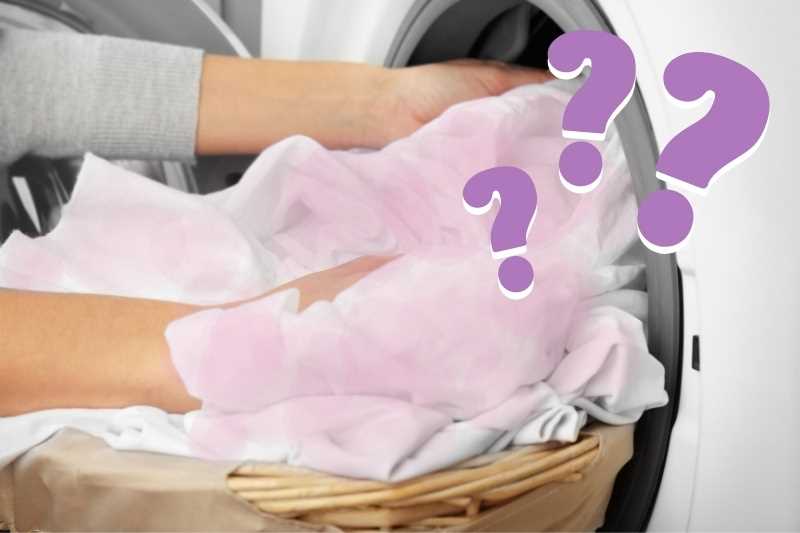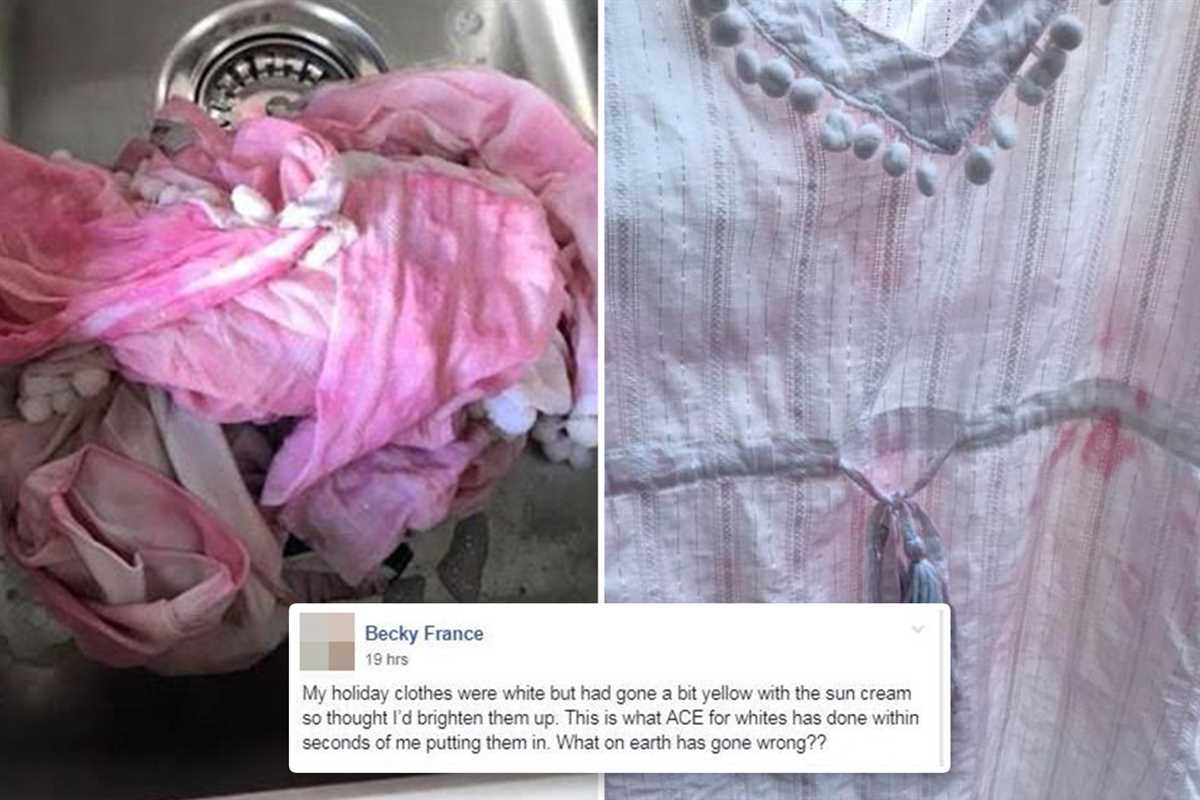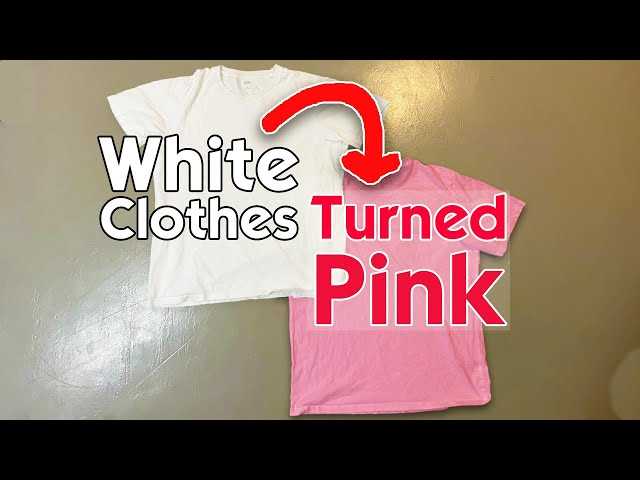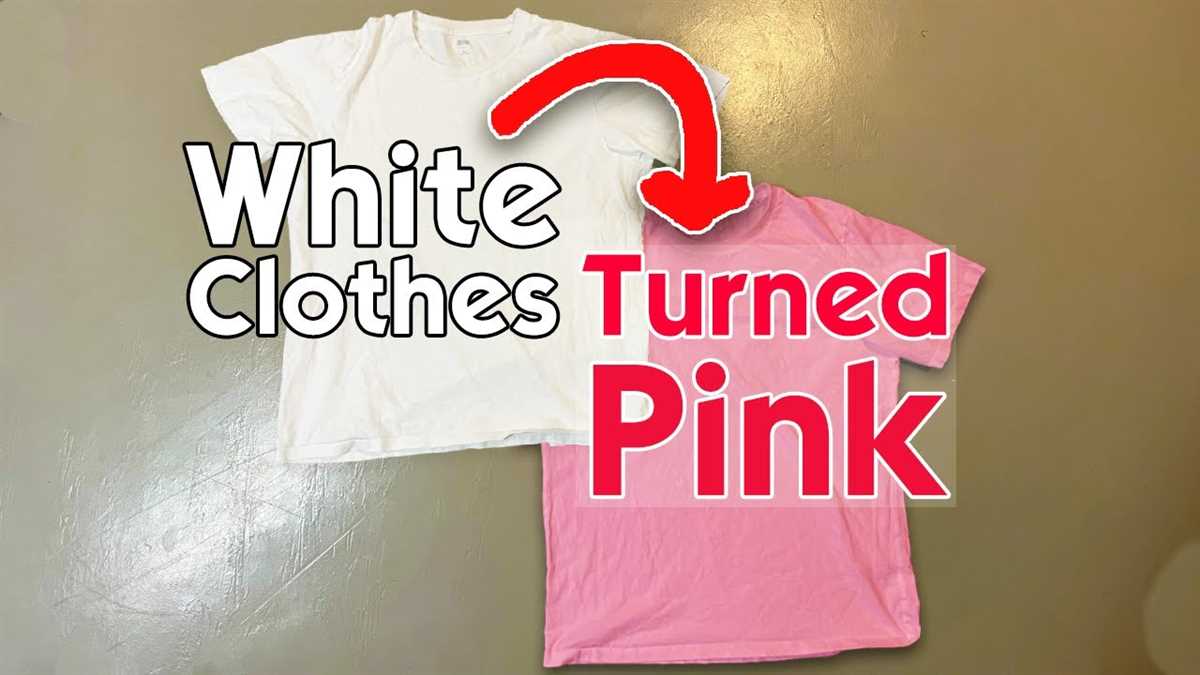




If you’ve ever experienced the frustration of pulling out your supposedly white clothes from the washer only to find them tinged with pink, you’re not alone. This common laundry mishap can leave you scratching your head and wondering what went wrong. Luckily, there are several reasons why your white clothes may be turning pink, and with a little know-how, you can prevent it from happening again.
One of the most common reasons for white clothes turning pink is bleeding from other colored garments. This can happen if you accidentally mix whites with bright or dark colors in the same load. The dye from the colored items can transfer onto the white clothes, resulting in a pink tint. To avoid this, it’s important to separate your whites from colored clothing and wash them separately.
Another reason for the pink tint on your white clothes could be due to the use of certain laundry detergents or stain removers. Some detergents contain optical brighteners, which are chemicals that make the whites appear brighter. However, these brighteners can also react with certain fabrics, causing them to turn pink. Similarly, stain removers containing benzoyl peroxide or hydrogen peroxide can have a similar effect on white clothes. It’s essential to read the labels on your laundry products and avoid those that may cause color bleeding.
Common mistakes causing white clothes to turn pink

-
Not separating coloured and white clothes

One common mistake that leads to white clothes turning pink is not separating them from other coloured clothes. When white clothes are washed together with red or pink garments, the colors can bleed onto the whites, resulting in a pink tint.
-
Using too much detergent

Using excessive amounts of detergent can also cause white clothes to turn pink. The excess soap can create a residue on the clothes, which can attract and trap the dyes from other garments in the wash, leading to a color transfer.
-
Not checking pockets

Forgetting to check the pockets of clothes before washing them can result in accidental color bleeding. Items such as lipstick, pen caps, or tissues, if left in the pockets, can dissolve in the water and release dyes, causing white clothes to turn pink.
-
Using bleach incorrectly
 Top RatedColor Catching Laundry Dye Trapping SheetsPrevents dye bleeding on your laundryThese dye trapping sheets absorb loose dyes during washes, protecting light-colored clothes. They work effectively in all temperatures and save you time and money while keeping clothes vibrant.
Top RatedColor Catching Laundry Dye Trapping SheetsPrevents dye bleeding on your laundryThese dye trapping sheets absorb loose dyes during washes, protecting light-colored clothes. They work effectively in all temperatures and save you time and money while keeping clothes vibrant.Mishandling bleach during the washing process can also lead to white clothes turning pink. Bleach should only be used on white fabrics and according to the instructions provided by the manufacturer. Failure to do so can cause the bleach to react with dyes present in the clothes, resulting in a pink hue.
-
Washing in hot water

Hot water can accelerate the color bleeding process, making it more likely for white clothes to turn pink. Using cold or warm water, especially when washing potentially colorfast items, can help prevent color transfer and preserve the whiteness of the clothes.
-
Not sorting clothes properly

Properly sorting clothes based on fabric type and color is crucial to preventing white clothes from turning pink. Delicate or bright-colored items that are prone to bleeding should be separated from white clothes to avoid any transfer of dyes.
Mixing colors in the wash
One of the main reasons why white clothes turn pink is the mixing of colors in the wash. It is important to separate your clothes by color before washing to avoid any color bleeding.
Here are some tips to help you prevent your white clothes from turning pink:
- Sort your laundry: Separate your clothes into different piles based on color. Washing whites separately from colored clothes can help prevent color bleeding.
- Pre-treat stained clothes: Treat any stains on your white clothes before washing. Pre-treating can help remove any color that may have transferred onto the fabric.
- Use color-catching sheets: Color-catching sheets are available in most supermarkets and can help absorb any stray colors that may bleed during the wash.
- Wash similar colors together: If you have to wash colored and white clothes together, try to group similar colors together. This can help reduce the chances of color bleeding.
- Follow garment care instructions: Always check the care label on your clothes before washing. The instructions will provide specific recommendations for washing temperature, detergents, and settings.
By following these tips and taking proper care when washing your clothes, you can help prevent your white clothes from turning pink and keep them looking vibrant and fresh.
Using the wrong laundry detergent

One of the main reasons why your white clothes may be turning pink is because you are using the wrong laundry detergent. Certain detergents contain optical brighteners, which are chemicals that make whites appear brighter by reflecting blue light. However, these brighteners can sometimes react with sweat, body oils, or other substances on your clothes, resulting in a pink or yellow tint.
In order to prevent this issue, it is important to choose a laundry detergent that is specifically formulated for white or light-colored clothing. These detergents are typically free from optical brighteners and other additives that can cause discoloration.
When selecting a laundry detergent, look for products that are labelled “for whites” or “color-safe bleach alternative”. These detergents are designed to keep your whites bright and prevent any color bleeding or fading.
Additionally, be sure to follow the instructions on the detergent packaging. Using too much detergent can lead to a buildup of residues, which can also cause discoloration. Measure the detergent according to the recommended amount and always check the label for any additional tips or guidelines.
If you have accidentally used the wrong detergent and your white clothes have turned pink, there are a few solutions you can try. First, you can try rewashing the affected garments with a color-safe bleach or a vinegar and water solution. If this does not work, you may need to consult a professional cleaner or dry cleaner for further assistance.
In conclusion, using the wrong laundry detergent can be a common reason for white clothes turning pink. By selecting the appropriate detergent and following the instructions carefully, you can help maintain the brightness and whiteness of your clothes for longer periods of time.
Overloading the washing machine

- Washing too many clothes at once: Overloading the washing machine can prevent proper water circulation and agitation, resulting in insufficient cleaning and rinsing. This can lead to residual detergent and color transfer, causing white clothes to turn pink.
- Filling the machine above the recommended level: Each washing machine has a recommended maximum level for water and clothes. Exceeding this level can cause overcrowding, reducing the effectiveness of the cleaning process and increasing the chances of color bleeding.
Not properly sorting clothes
One of the main reasons why your white clothes may be turning pink is because you are not properly sorting your laundry.
When washing clothes, it is important to separate them based on their color. If you mix white clothes with colored clothes, there is a high chance that the colors will bleed and transfer onto the white clothes.
Tips for proper sorting:
- Separate whites from colors: Always keep your whites separate from colored clothes to prevent color bleeding.
- Use color catchers: Color catchers are laundry sheets that help trap and absorb any color bleeding in the wash. Adding a color catcher sheet to your laundry load can help prevent the transfer of colors.
- Sort by fabric type: Different fabrics may require different care and washing methods. Separating clothes by fabric type can help prevent damage and color bleeding.
Sorting your clothes properly is an essential step in preventing your white clothes from turning pink. Taking the time to separate them can help maintain the whiteness of your clothes and prevent color transfer.
Bleeding dyes from other garments
One common reason why your white clothes might be turning pink is because of bleeding dyes from other garments. This can happen when you wash your white clothes together with colored garments that are not colorfast.
Colorfastness refers to the ability of a fabric or garment to retain its original color when subjected to washing or other cleaning processes. If a garment is not colorfast, the dyes used in the fabric may bleed out and transfer onto other items, leading to staining or discoloration.
Here are a few reasons why bleeding dyes can occur:
- Poor dye quality: Some cheaper or low-quality garments may have dyes that are not properly set or treated. As a result, the dyes may bleed out more easily when exposed to water or laundry detergent.
- Incorrect washing temperature: Washing white clothes together with colored garments in hot water can increase the chances of bleeding dyes. The heat can cause the dyes to release from the fabric and transfer onto other items.
- Overloading the washing machine: When you overload the washing machine, it can lead to poor water circulation. This can cause the dyes from the colored garments to disperse unevenly and transfer onto the white clothes.
- Not sorting the laundry: Failing to separate white clothes from colored garments before washing can result in dye bleed. It is important to sort the laundry properly to prevent color transfer.
To minimize the risk of bleeding dyes from other garments:
- Separate your laundry: Sort your laundry into separate piles of whites, lights, and darks. Whites should always be washed separately to prevent any color transfer.
- Pre-treat stained items: If you notice any colored stains on your white clothes, it is recommended to pre-treat the stains before washing to prevent further discoloration.
- Use color-catching sheets: Color-catching sheets or laundry pods are available in the market and can help to absorb any bleeding dyes and prevent them from transferring onto other garments.
- Follow garment care instructions: Always check the care labels on your garments for specific washing instructions. Some items may require hand washing or special care to prevent color bleeding.
By being mindful of these factors and taking proper care when laundering your clothes, you can reduce the risk of your white clothes turning pink due to bleeding dyes from other garments.
FAQ
Why are my white clothes turning pink?
There could be several reasons why your white clothes are turning pink. One common reason is that you are accidentally mixing your white clothes with red or pink clothing during the wash. The dyes from the red or pink clothing can transfer onto your white clothes, causing them to appear pink. Another reason could be the use of a detergent or laundry product that contains bleach alternatives or optical brighteners, which can react with certain substances in water and cause your white clothes to turn pink.
How can I prevent my white clothes from turning pink?
To prevent your white clothes from turning pink, you should always sort your laundry carefully before washing. Keep white clothes separate from any red or pink clothing to avoid color transfer. Additionally, it’s a good idea to use a detergent that does not contain bleach alternatives or brighteners, as these can contribute to the pink discoloration. If you notice any stains or spots on your white clothes, pre-treat them before washing to remove any potential pigment.
Can washing machines cause white clothes to turn pink?
In some cases, washing machines can contribute to white clothes turning pink. If your washing machine is not thoroughly rinsing out all the detergent or bleach alternatives during the wash cycle, it can leave behind residues that can later react with substances in water or other fabrics, resulting in a pink hue. Regularly cleaning and maintaining your washing machine can help prevent this issue and ensure that your white clothes stay white.
What should I do if my white clothes have already turned pink?
If your white clothes have already turned pink, there are a few things you can try. You can try rewashing the clothes using a detergent that does not contain bleach alternatives, as this might help remove the pink tint. Alternatively, you may also consider using a color remover product specifically designed to eliminate unwanted color from fabrics. If the pink hue persists, you may need to accept that the clothes are permanently stained and may not be able to return to their original white color.
Are there any other reasons why white clothes turn pink?
While color transfer and the use of certain detergents are the most common reasons for white clothes turning pink, there can be other factors at play as well. For instance, if your white clothes are made of delicate fabrics that are not colorfast, they may be more prone to picking up dyes from other clothing. Additionally, exposure to sunlight or harsh chemicals can also cause white clothes to fade or change color, including turning pink.











